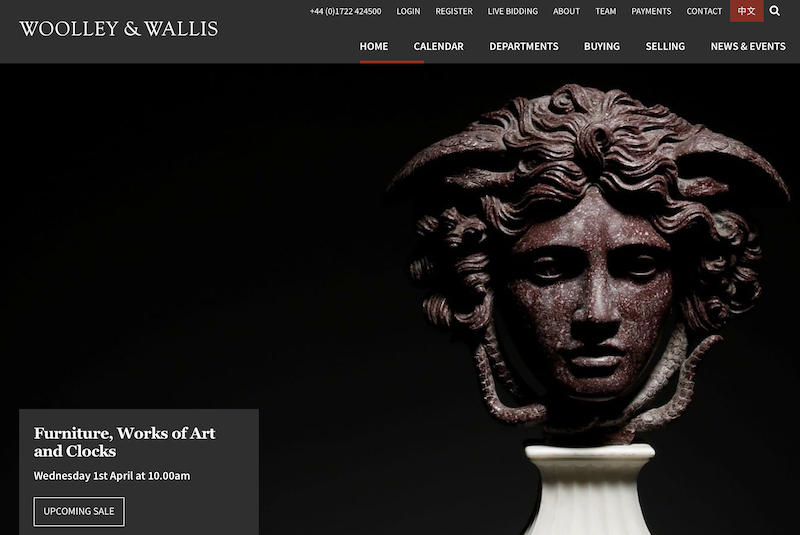


Two antique specialists were in Guernsey yesterday, taking a look at some of the island's potential hidden treasures, and giving their insight into the potential value and history of each item, including some antique medals from the First World War and earlier.
Both representatives of Woolley & Wallis - a leading UK regional auctioneer, which focuses on having specialists - Ned Cowell and Alexandra Domeracki spent their morning at St Pierre Park meeting people and appraising what they had brought to show them.
Mr Cowell specialises in medals, coins, arms and armour, while Ms Domeracki is a specialist in Asian art. The pair were in Guernsey thanks to Victoria Brazier Creagh, a local specialist in jewellery, who helped set up the visit with W&W.
As part of covering the visit, Bailiwick Express Reporter Stephen King decided to take some family medals to show Mr Cowell.
These medals belong to the family of the people my grandad lived with when he was evacuated to the UK during the war. They were passed down to him, and have now found their way to me. I had a vauge understanding of what medals they were, and what conflicts they were from, but was intrigued to found out what they might be worth, and what other information Mr Cowell might be able to glean from them.
Pictured: The medals Bailiwick Express took to the valuation. L-R two medals from the First World War, a silver war badge, and a medal from the Indian Mutiny.
Little did I know, the recipient of the medals was actually named around the edge, along with information about his regiment - these First World War medals were for service in the Machine Gun Corps.
The Indian Mutiny medal, Ned speculated, probably belonged to that man's father, and had been handed down through the family. The valuations Ned came in with were as follows:
The two First World War medals: around £30 to £50 each, slightly higher than a normal medal of its kind because of the Machine Gun Corps affiliation.
The Indian Mutiny medal: £300 to £500. As a medal from the Victorian Era, there were far fewer soldiers, and so far fewer medals made. It was made in the hundreds rather than the tens of thousands, but it was not a special variety of the medal.

Pictured: The two First World War medals.

Pictured: Mr Cowell works for Woolley & Wallis. This business try to focus on having personal services for their clients, employing experts in specific areas.
Mr Cowell said: "So this [the Indian Mutiny medal] shows he was from the First Bombay European Fusiliers. It is a campaign medal, but it doesn't have any clasps, meaning this person wasn't involved specifically in any of the major efforts during the war. Possibly he played a part in more of a supporting role.
"When we look at medals the condition is much less important than say coins. Much of the value comes from the story behind the item - if we look at these medals from the First World War, you can see the person is from the Machine Gun Corps, which is very prestigious. Because of that, they might be more valuable than a medal from someone in the Artillery. Obviously this is nothing to do with how courageous that person's involvement in that long, dark and bloody affair was: collectors simply put value on things for all sorts of different reasons.
"For collectors, getting to grips with the story behind an item is a big part of the hobby."
Pictured: Ned Cowell works for Woolley & Wallis, and came to Guernsey along with his colleague Alexandra Aguilar Domeracki to offer free valuations for islanders' antiques. Mr Cowell has been on ITV's Dickinson's Real Deals, while Ms Domeracki has been on the BBC's Antiques Roadshow.
While Mr Cowell said the two First World War medals were fairly common place, he said the silver badge that accompanied them was particularly interesting: "This is a silver war badge, for men who were going to be seen wearing civilian clothes who might otherwise attract attention for, well, being a coward. It became a real problem at the time that people at home would get very upset at a man not being in uniform - you may have heard of women giving men white feathers?
"Well the government came up with a solution, which was to produce badges like this. They had various different ones, some for civil servants, for example, whose jobs were deemed too important to give up.
"But this one was for men who had given service, but for one legitimate reason or another no longer could be in uniform and had been discharged. The most common of these reasons would have been men who were wounded or had found themselves with an injury or illness. If you had lost a leg, then it would be obvious, but if the gas had found its way to your lungs, that wouldn't be so clear to people around you.
"They were a good way to avoid being given the cold shoulder in the pub."
Pictured: The event was held at St Pierre Park.
Mr Cowell and Ms Brazier Creagh both said the Channel Islands were incredible places to look at antiques, because of the huge range of different things islanders have. They both agreed there was an appreciation of history on the islands.
Mrs Brazier Creagh said she suspected the large range of different antiques from all around the world being in the island was down to people leaving in different British colonies settling here when those countries gained their independence.
Pictured top: Ned Cowell.
Comments
Comments on this story express the views of the commentator only, not Bailiwick Publishing. We are unable to guarantee the accuracy of any of those comments.